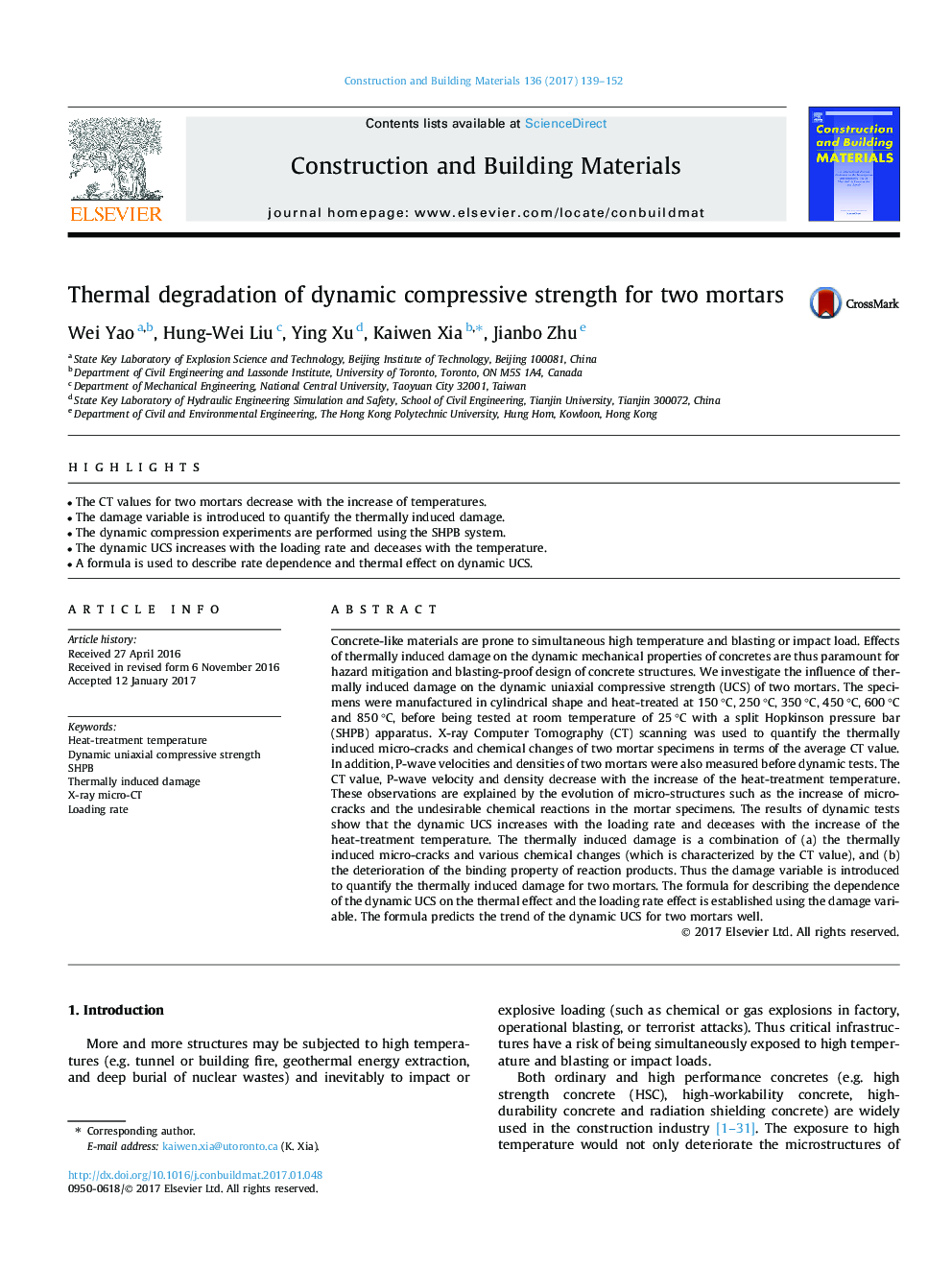| Article ID | Journal | Published Year | Pages | File Type |
|---|---|---|---|---|
| 4918529 | Construction and Building Materials | 2017 | 14 Pages |
Abstract
Concrete-like materials are prone to simultaneous high temperature and blasting or impact load. Effects of thermally induced damage on the dynamic mechanical properties of concretes are thus paramount for hazard mitigation and blasting-proof design of concrete structures. We investigate the influence of thermally induced damage on the dynamic uniaxial compressive strength (UCS) of two mortars. The specimens were manufactured in cylindrical shape and heat-treated at 150 °C, 250 °C, 350 °C, 450 °C, 600 °C and 850 °C, before being tested at room temperature of 25 °C with a split Hopkinson pressure bar (SHPB) apparatus. X-ray Computer Tomography (CT) scanning was used to quantify the thermally induced micro-cracks and chemical changes of two mortar specimens in terms of the average CT value. In addition, P-wave velocities and densities of two mortars were also measured before dynamic tests. The CT value, P-wave velocity and density decrease with the increase of the heat-treatment temperature. These observations are explained by the evolution of micro-structures such as the increase of micro-cracks and the undesirable chemical reactions in the mortar specimens. The results of dynamic tests show that the dynamic UCS increases with the loading rate and deceases with the increase of the heat-treatment temperature. The thermally induced damage is a combination of (a) the thermally induced micro-cracks and various chemical changes (which is characterized by the CT value), and (b) the deterioration of the binding property of reaction products. Thus the damage variable is introduced to quantify the thermally induced damage for two mortars. The formula for describing the dependence of the dynamic UCS on the thermal effect and the loading rate effect is established using the damage variable. The formula predicts the trend of the dynamic UCS for two mortars well.
Related Topics
Physical Sciences and Engineering
Engineering
Civil and Structural Engineering
Authors
Wei Yao, Hung-Wei Liu, Ying Xu, Kaiwen Xia, Jianbo Zhu,
